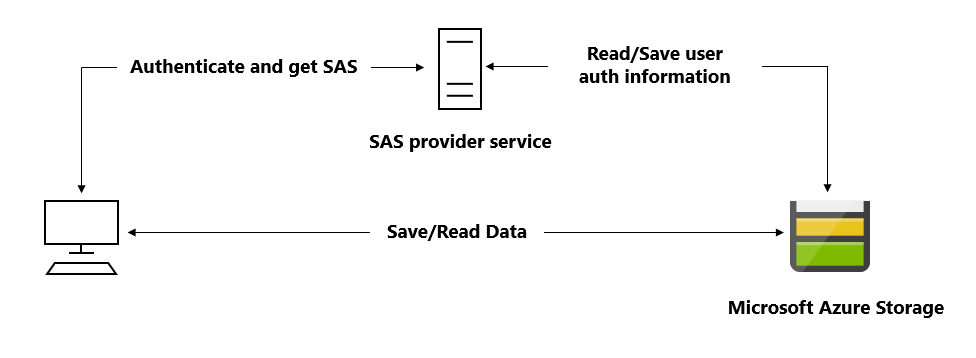Choose when to use shared access signatures
Use a SAS when you want to provide secure access to resources in your storage account to any client who doesn't otherwise have permissions to those resources.
A common scenario where a SAS is useful is a service where users read and write their own data to your storage account. In a scenario where a storage account stores user data, there are two typical design patterns:
Clients upload and download data via a front-end proxy service, which performs authentication. This front-end proxy service has the advantage of allowing validation of business rules, but for large amounts of data or high-volume transactions, creating a service that can scale to match demand may be expensive or difficult.

A lightweight service authenticates the client as needed and then generates a SAS. Once the client application receives the SAS, they can access storage account resources directly with the permissions defined by the SAS and for the interval allowed by the SAS. The SAS mitigates the need for routing all data through the front-end proxy service.

Many real-world services might use a hybrid of these two approaches. For example, some data might be processed and validated via the front-end proxy, while other data is saved and/or read directly using SAS.
Additionally, a SAS is required to authorize access to the source object in a copy operation in certain scenarios:
When you copy a blob to another blob that resides in a different storage account, you must use a SAS to authorize access to the source blob. You can optionally use a SAS to authorize access to the destination blob as well.
When you copy a file to another file that resides in a different storage account, you must use a SAS to authorize access to the source file. You can optionally use a SAS to authorize access to the destination file as well.
When you copy a blob to a file, or a file to a blob, you must use a SAS to authorize access to the source object, even if the source and destination objects reside within the same storage account.